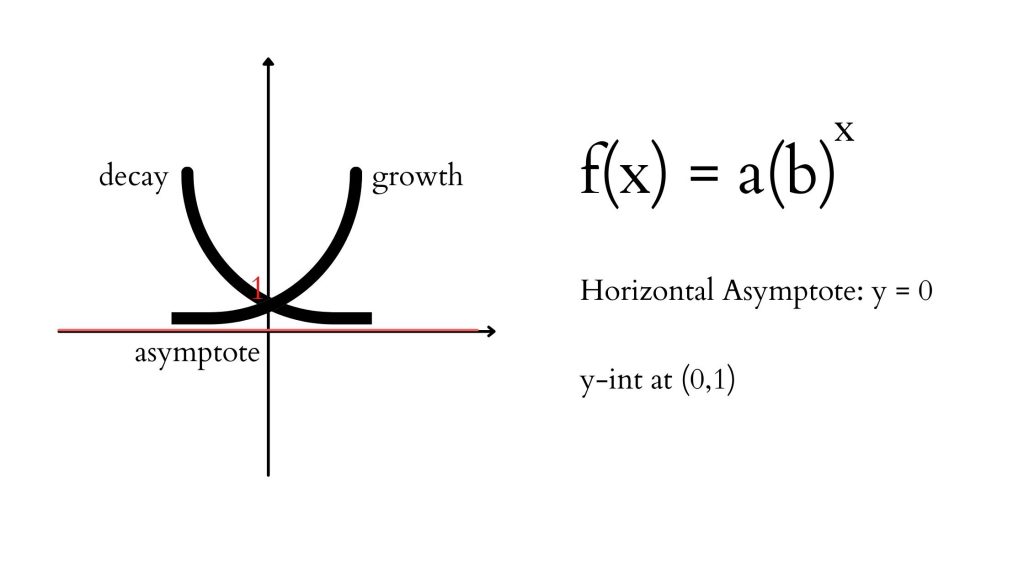
Exponential Functions. Transformations and Applications IntoMath
Tip: If you recall the characteristics of the basic logarithmic function (\(f(x)=log_b(x)\)) graph (which can be found here), you'll see that the the basic exponential and logarithmic functions are very similar, and are, in fact, related. This is because both functions are inverses of each other, so their characteristics are also the inverse of each other.
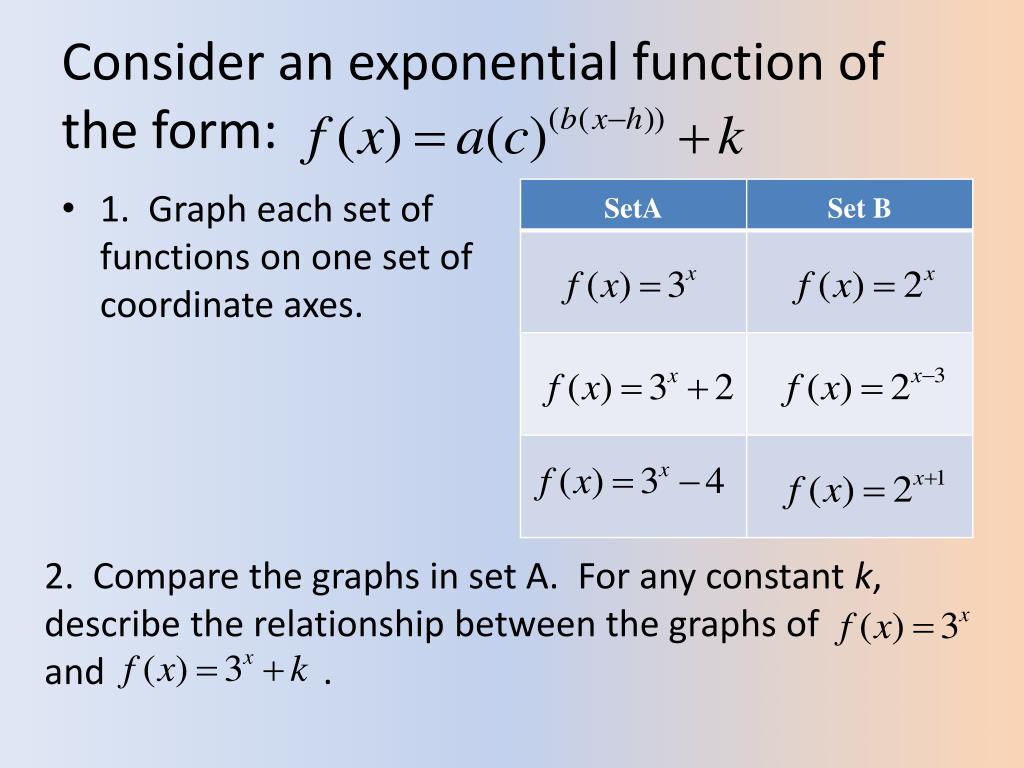
PPT TRANSFORMATIONS OF EXPONENTIAL FUNCTIONS PowerPoint Presentation
7.2 Transformations of Exponential Functions Digital Resources to Enhance Learning and Differentiate Instruction. 7.2 Exponential Functions McGraw Hill Math 30-1 Teachers Resource DVD . N04_GG_v1 Geogebra file for Transformations. N05_7.2_348_IA Explore Parameters a and b
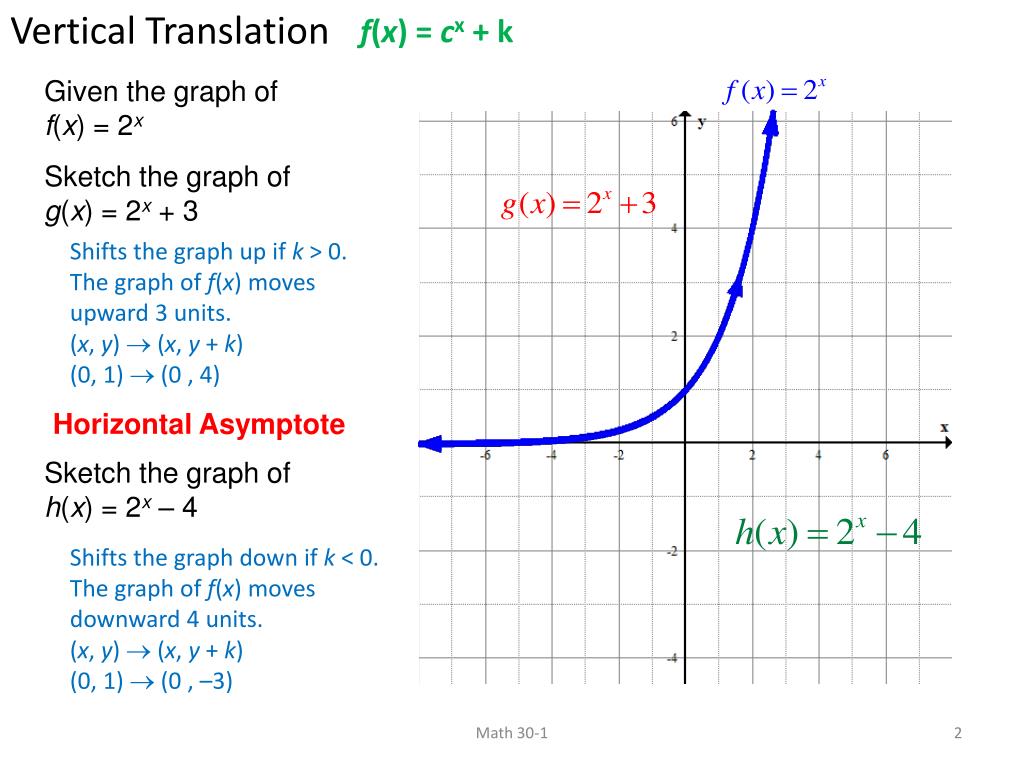
PPT 3B Transformations of Exponential Functions PowerPoint
Transformations of Exponential Function - Example Transformation of Logarithmic Functions Example: Transformation of the Natural Logarithmic Function Transformation of Exponential and Logarithmic Functions

PPT 3B Transformations of Exponential Functions PowerPoint
Products, sums, and powers of the direct function (5 formulas) Transformations (115 formulas) Exp. Elementary Functions Exp: Transformations (115 formulas) Transformations and argument simplifications (88 formulas) Addition formulas (4 formulas) Half-angle formulas (3 formulas) Multiple arguments (7 formulas) Some functions of arguments (8.

Transformations of Exponential Functions YouTube
Transformations of exponential graphs behave similarly to those of other functions. Just as with other parent functions, we can apply the four types of transformations—shifts, reflections, stretches, and compressions—to the parent function f (x)= bx f ( x) = b x without loss of shape.

transformations of functions definitions, facts and solved examples
Transformations of exponential graphs behave similarly to those of other functions. Just as with other parent functions, we can apply the four types of transformations—shifts, reflections, stretches, and compressions—to the parent function \displaystyle f\left (x\right)= {b}^ {x} f (x) = bx without loss of shape.
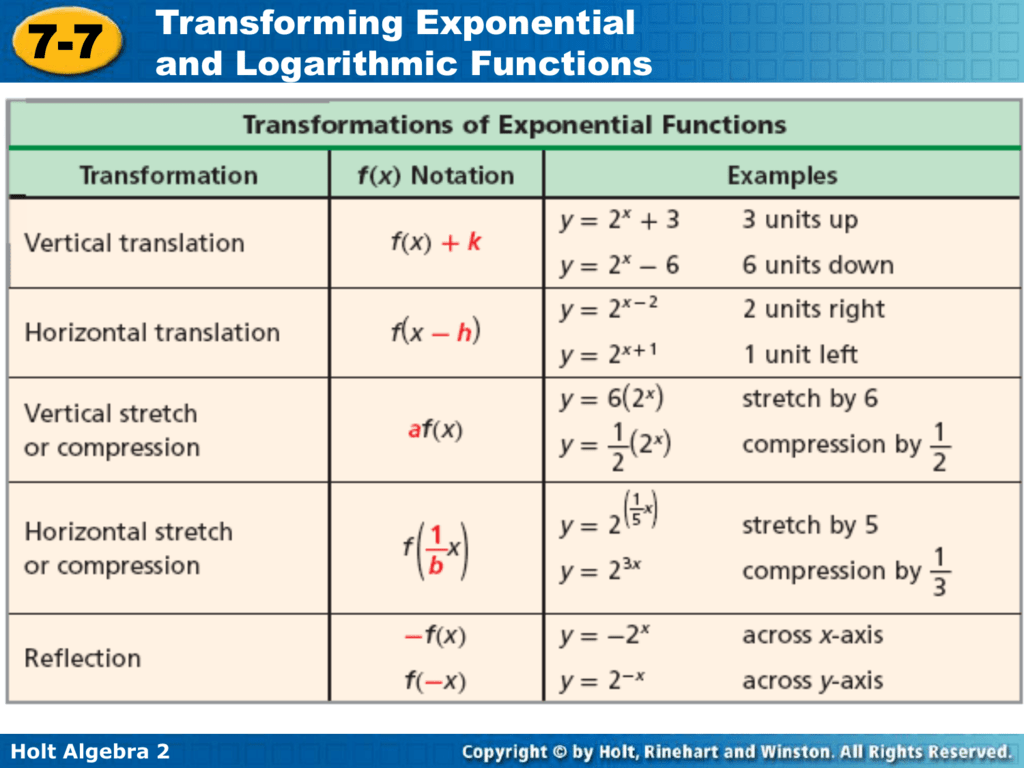
Transforming Exponential and Logarithmic Functions
The sections below will describe how specifically an exponential function behaves under these transformations. Horizontal Shifts and the Y-intercept If the x-variable of a parent function, f (x), is replaced with 'x + 2,' every point of the function will move 2 units left.

Describe Transformation of Exponential Function MCR3U GCSE IBSL YouTube
Transformations and Applications. Exponential functions are functions that model a very rapid growth or a very rapid decay of something. They are used to calculate finances, bacteria populations, the amount of chemical substance and much more. In the exponential function the input is in the exponent. The base of the power determines whether the.

Day 10 HW (1 to 12) Exponential Transformations YouTube
Graph exponential functions. Graph exponential functions using transformations. As we discussed in the previous section, exponential functions are used for many real-world applications such as finance, forensics, computer science, and most of the life sciences.

Algebra Lesson 65 Transformations of Exponential Functions YouTube
Graphing Transformations of Exponential Functions Transformations of exponential graphs behave similarly to those of other functions. Just as with other parent functions, we can apply the four types of transformations—shifts, reflections, stretches, and compressions—to the parent function \(f(x)=b^x\) without loss of shape.
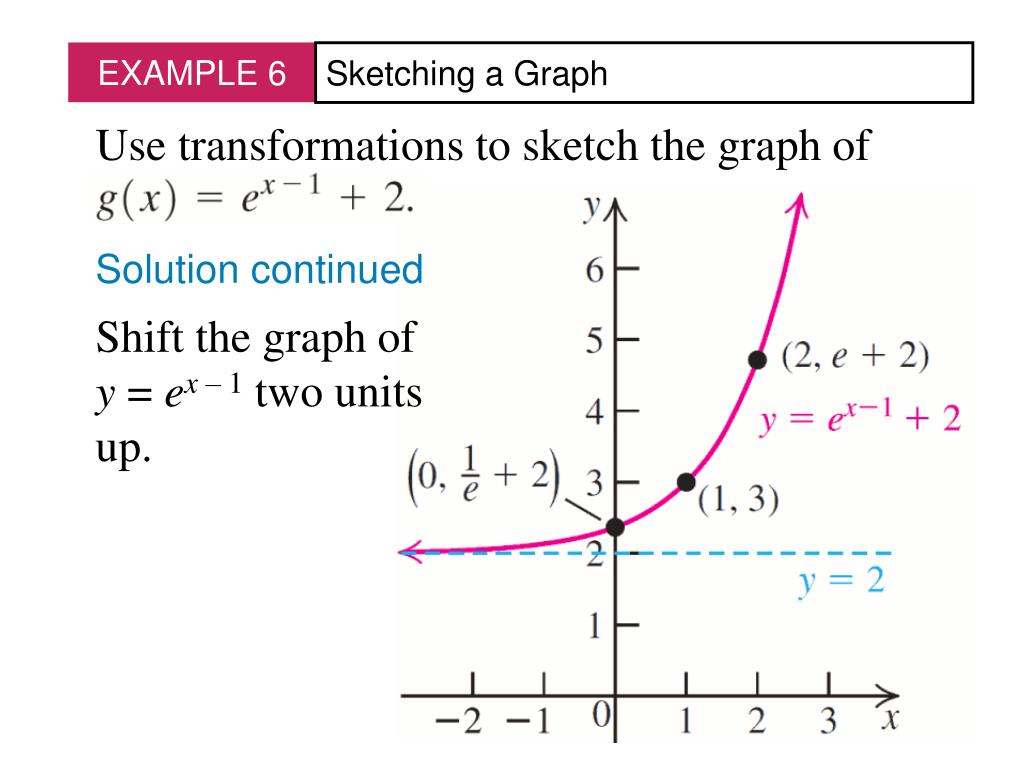
++ 50 ++ y=e^x transformations 948597Y=e^x graph transformations
New video of a Grade 11 Final Exam. Check it out! Free lessons, worksheets, and video tutorials for students and teachers. Topics in this unit include: exponential growth, exponential decay, compound interest, graphing exponential functions, and transformations of exponential functions.

MCR3U Transformations of Exponential Functions YouTube
Graphs of exponential functions © 2024 Khan Academy Terms of use Privacy Policy Cookie Notice Transforming exponential graphs (example 2) Google Classroom About Transcript Given the graph of y=2ˣ, Sal graphs y= (-1)2ˣ⁺³+4, which is a vertical reflection and a shift of y=2ˣ. Questions Tips & Thanks Want to join the conversation? Sort by: Top Voted

Transformations of Exponential Functions YouTube
Because we know the graph of y=2^x has a horizontal asymptote as y=0. The graph y=2^ (-x) reflects y=2^x over the y-axis. y=2^ (-x)-5, the -5 is the vertical shift, so it moves the graph 5 units down. Essentially, it moves the horizontal asymptote 5 units down as well. 3 comments.

PPT 3B Transformations of Exponential Functions PowerPoint
D: Graph Shifts of Exponential Functions. Exercise 4.2e. D. ★ In the following exercises, use transformations to graph each exponential function. State the transformations that must be done to the parent function in order to obtain the graph. 45. g(x) = 2x + 1. 46. g(x) = 2x − 1. 47. g(x) = 2x − 2. 48. g(x) = 2x + 2.

Intro Graphing Transformation with Exponential Functions YouTube
Graph Basic Exponential Functions. Exponential growth is modelled by functions of the form f(x) = bx where the base is greater than one. Exponential decay occurs when the base is between zero and one. We'll use the functions f(x) = 2x and g(x) = (1 2)x to get some insight into the behaviour of graphs that model exponential growth and decay.

Transformations of Exponential Functions Part 1 YouTube
Yes, the -2 indicates that the new function must be reflected across the x-axis, but what your forgetting is that this is a transformation from the parent graph, in this case, is the exponential graph.